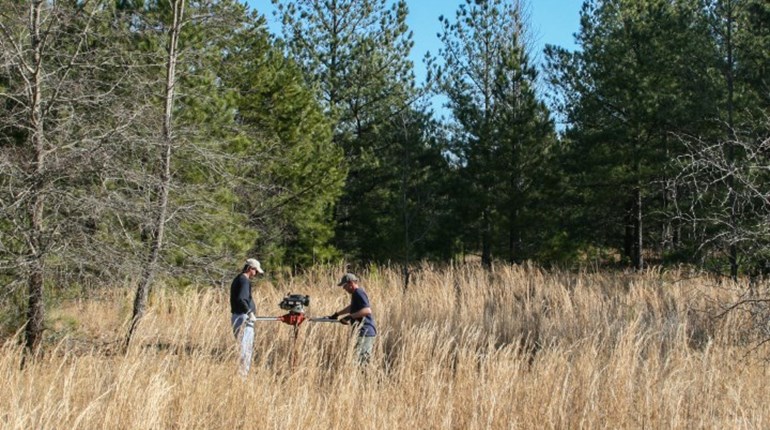
“What did I do wrong?” you wonder.
You had gotten up early, dressed in camouflage head to toe, walked in the dark to a clearing, sat down under a tree, and called in a flock of turkeys. When it became light enough to see the biggest gobbler, you slowly set your sights on it and… in a flush of feathers and gobbles and cackles, they were all gone.
But why? Maybe it was a white sock peeking out from under your pant leg or the glint of your glass watch face. Or maybe you raised your gun too fast, or didn't match your surroundings well enough. It's easy for us to overlook these things, but a turkey overlooks nothing.
With eyesight three times better than ours and the ability to see 360 degrees within a second, turkeys are some of the best-equipped animals when it comes to watching out for predators. For the human hunter, this means near-perfect, complete camouflage is essential.
Wearing camo head to toe is pointless if it doesn't match your surroundings. That's why it helps to see the area you'll be hunting in beforehand to get an idea of what you'll need to look like. Some things to watch out for are geometric patterns, like vertical grass or jagged rock, as well as color. The time of day and weather plays a role here, too; if you'll be in the shade the whole time you're hunting, dress darker, and if it's raining, be aware of the effects the water will have on your clothes.
While your jacket and pants cover most of your body, it's the little things-like your solid-colored boots-that turkeys usually spot. Depending on how you sit, your feet may stick forward the furthest. Try buying the boots in green or brown, then breaking up the solid-colored parts with a few scattered lines from a black permanent marker.
Remember that your hands will be moving the most, so hide them with camo gloves. Just be sure they're thin enough for you to still easily work every part of your gun. As a warm-weather alternative, use some military-style camo face paint instead. This will allow for more feeling, but it can be a bit sticky and hard to remove. (If you go this route, try bringing some baby wipes to clean up at the end of the day.)
Now for the hardest part: disguising your face. As when you choose a ski mask for a snowy, windy day, you have to be careful to find a medium between too much cover-hard to see, hard to breathe-and not enough. While most people go with a face veil attached to a hat or hood, you again have the option of face paint. It's hard to apply but gives you the ability to create the best custom pattern and is generally less annoying than anything hanging over your face. Just don't forget to wash it off before you stop at the gas station on the way home!
Finally, get a hat that adds some new shape to your unnatural silhouette and get all of your hair secured under it. Now, before you head out, check everything. A shirt collar, sock, or part of your wrist shining through can easily be the difference between getting a shot and watching the flock fly away.
All of this gear may seem very specialized and expensive, but turkeys really can see that well. And one more thing: The camo jacket you wear deer hunting from a tree stand is made to look like the tree. For turkey hunting, you want to look like the low underbrush. Don't try to mix your gear for this!
Now you should be nearly invisible, except for that gun you're holding. Almost all modern turkey guns are available in camo patterns, but many people prefer a more subtle, regular black gun. Fortunately you can make anything look like a mossy stick with a roll of self-adhesive camo tape. Even a gun that comes with a camouflage pattern already on it can be improved by a few wraps around the barrel.
Once you have (literally!) covered everything, you're ready to get out to your spot, call and wait. Once you're there, get in position (for right-handed shooters, left shoulder towards turkeys allows for the most movement). Then lay your gear out: Calls, shells, walkie-talkie, etc. Unless it's bright yellow, set it on the ground where you can find it. The last thing you want is something to get stuck in the bottom of your pocket when you need it, because getting it unstuck requires movement, and movement stands out. All your hard work painting the backs of your hands can be negated by scratching your nose. Your only actions should be to raise your gun (it's already in your hands), take the safety off and pull the trigger.
Turkey hunting takes a lot of preparation and care, but that's what makes it fun. Finding such a challenge in such a vulnerable, common game bird is what makes it interesting. Even if you follow all of these steps and do everything right, you still have to make the shot. So yes, they're smaller than a bear and yes, they're slower than a deer, but all it takes is the flash of a wrist, color of a boot lace or twitch of a finger and they've beaten you again. Do not underestimate the turkey.







































